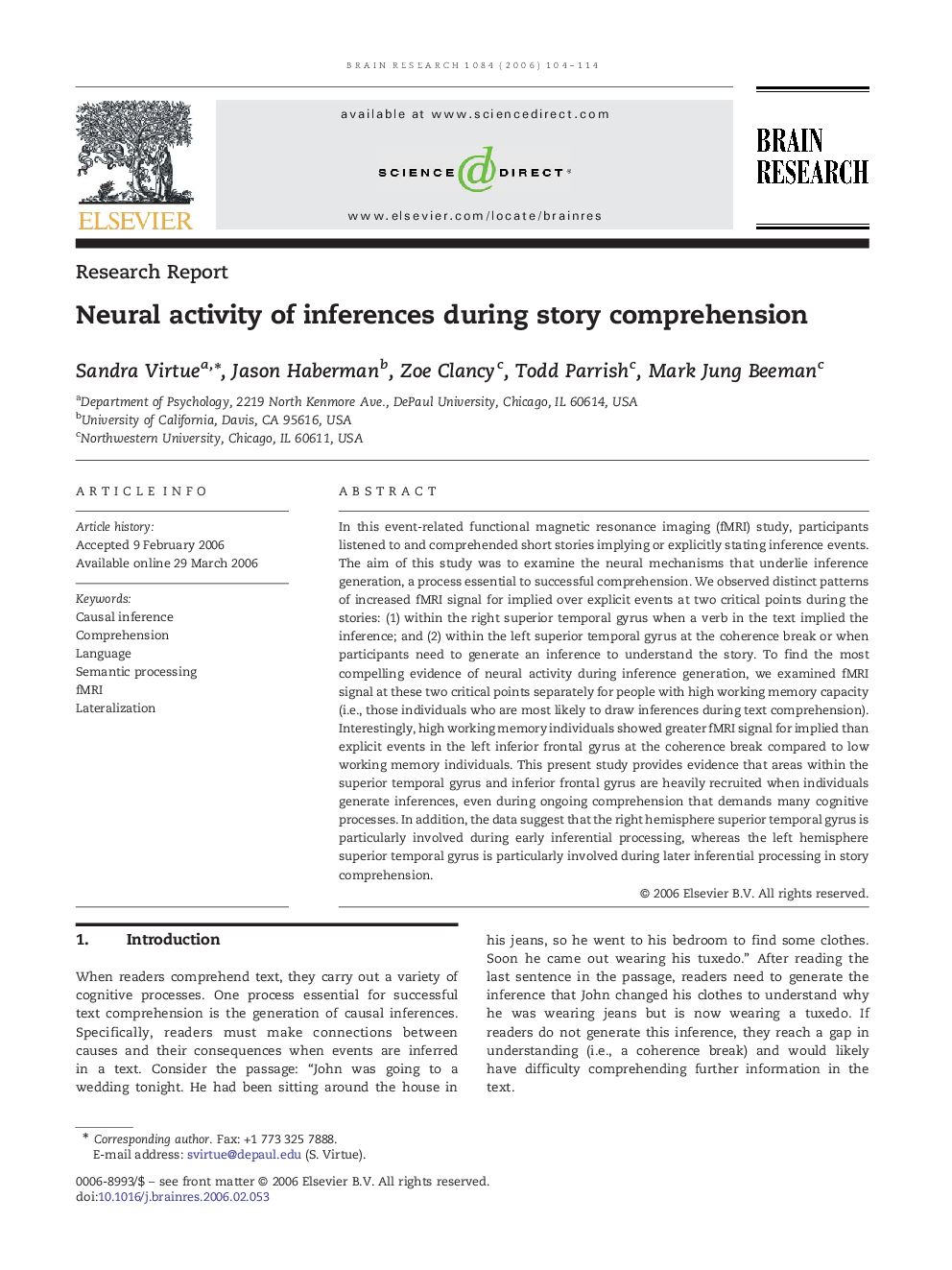| Article ID | Journal | Published Year | Pages | File Type |
|---|---|---|---|---|
| 4333019 | Brain Research | 2006 | 11 Pages |
In this event-related functional magnetic resonance imaging (fMRI) study, participants listened to and comprehended short stories implying or explicitly stating inference events. The aim of this study was to examine the neural mechanisms that underlie inference generation, a process essential to successful comprehension. We observed distinct patterns of increased fMRI signal for implied over explicit events at two critical points during the stories: (1) within the right superior temporal gyrus when a verb in the text implied the inference; and (2) within the left superior temporal gyrus at the coherence break or when participants need to generate an inference to understand the story. To find the most compelling evidence of neural activity during inference generation, we examined fMRI signal at these two critical points separately for people with high working memory capacity (i.e., those individuals who are most likely to draw inferences during text comprehension). Interestingly, high working memory individuals showed greater fMRI signal for implied than explicit events in the left inferior frontal gyrus at the coherence break compared to low working memory individuals. This present study provides evidence that areas within the superior temporal gyrus and inferior frontal gyrus are heavily recruited when individuals generate inferences, even during ongoing comprehension that demands many cognitive processes. In addition, the data suggest that the right hemisphere superior temporal gyrus is particularly involved during early inferential processing, whereas the left hemisphere superior temporal gyrus is particularly involved during later inferential processing in story comprehension.
